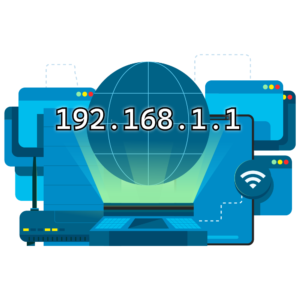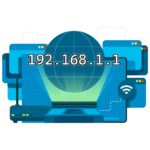Understanding IP Addresses
The Internet is a complex network that connects billions of devices worldwide, allowing them to communicate with one another seamlessly. But have you ever wondered how your device knows where to send or receive information? This is where IP addresses come in. An IP address is the fundamental building block of internet communication, ensuring that data gets to the right destination.
In this guide, we’ll explore what IP address are, how they work, and why they are essential to modern internet communication. By the end, you’ll have a clearer understanding of IP addresses and the role they play in our everyday digital lives.

Visit our www.climaxtechno.com website for more Programming related resources.
What Is an IP Address?
An IP address (Internet Protocol address) is a unique string of numbers assigned to every device connected to a network that uses the Internet Protocol for communication. This address acts like a home address for your device on the internet, enabling data to be routed between devices and ensuring that information reaches its intended destination.
Two Main Types of IP Addresses:
- IPv4 (Internet Protocol version 4): The most commonly used version of IP, consisting of four sets of numbers separated by dots, e.g.,
192.168.1.1. IPv4 addresses are 32 bits long, allowing for about 4.3 billion unique addresses. - IPv6 (Internet Protocol version 6): Developed to address the shortage of IPv4 addresses, IPv6 uses a 128-bit system, providing an almost infinite number of unique addresses. An IPv6 address looks something like this:
2001:0db8:85a3:0000:0000:8a2e:0370:7334.
Also Read: How to Troubleshoot Common Network Issues: A Step-by-Step Guide
How Do IP Addresses Work?
IP addresses work by assigning a unique identifier to each device connected to the internet, which allows them to communicate with each other. When you access a website, send an email, or use any online service, your device sends data packets containing your IP address and the recipient’s IP address. This ensures that the information is routed correctly.
Components of an IP Address:
An IP address is divided into two parts:
- Network ID: Identifies the network to which the device belongs.
- Host ID: Identifies the specific device within that network.
For instance, in the IPv4 address 192.168.1.1, the first three sets of numbers (192.168.1) represent the network, while the last set (1) identifies the host (device) within that network.
How Data Travels Using IP Addresses:
- Request Initiation: When you type a URL (e.g., www.computerclimax.com ) in your browser, your device sends a request to a Domain Name System (DNS) server to translate the domain name into an IP address.
- Packet Routing: Once the DNS server returns the IP address, data packets containing your IP address and the recipient’s IP address are routed through various networks (including routers and switches) until they reach their destination.
- Response: The target server (e.g., www.computerclimax.com) sends data back to your IP address, completing the communication process.
Also Read: What is DNS and How It Works
Dynamic vs. Static IP Address
IP address can be categorized into two types: dynamic and static.
Dynamic IP Address:
Dynamic IP address are assigned to devices temporarily and change each time the device connects to the network. Most home internet users have dynamic IP address, which are managed by DHCP (Dynamic Host Configuration Protocol) servers. This is a cost-effective solution for internet service providers (ISPs) because it allows them to reuse IP addresses.
Static IP Address:
In contrast, static IP address remain the same and are manually assigned to devices. They are often used by businesses, servers, and individuals who require a consistent address for hosting websites, email servers, or other services.
Dynamic vs. Static IP: Which Is Better?
- Dynamic IP addresses are ideal for most users because they are easy to manage and provide better security due to regular IP changes.
- Static IP addresses are essential for businesses that host websites, servers, or VPNs, where a consistent and predictable IP address is necessary.
Public vs. Private IP Addresses
IP addresses are also categorized into public and private IP addresses based on whether they are used on the public internet or within private networks.
Public IP Addresses:
A public IP address is used to identify devices on the global internet. Each device connected to the internet must have a unique public IP address. These addresses are assigned by ISPs and are routable on the public internet.
Private IP Addresses:
Private IP addresses are used within local networks (e.g., your home or office network) and are not routable on the public internet. Instead, devices within a network communicate with each other using private IP addresses, while a NAT (Network Address Translation) device (usually your router) translates these addresses into a public IP when accessing the internet.
Common Private IP Ranges:
- 10.0.0.0 to 10.255.255.255
- 172.16.0.0 to 172.31.255.255
- 192.168.0.0 to 192.168.255.255
Also read: How to Optimize Your Wi-Fi Signal for Better Performance
IPv4 vs. IPv6: What’s the Difference?
As mentioned earlier, IPv4 and IPv6 are two different versions of the Internet Protocol. Let’s break down the key differences:
IPv4:
- Address Length: 32-bit, supports 4.3 billion addresses.
- Format: Four sets of numbers (e.g.,
192.168.1.1). - Depletion: With the rapid growth of internet users and devices, IPv4 addresses are running out.
IPv6:
- Address Length: 128-bit, supports an almost unlimited number of addresses.
- Format: Eight groups of hexadecimal numbers (e.g.,
2001:0db8:85a3:0000:0000:8a2e:0370:7334). - Adoption: IPv6 adoption is growing, but IPv4 is still in wide use. Many devices and networks support dual-stack systems that allow both protocols to work together.
Also Read: The Differences Between IPv4 and IPv6: What You Need to Know
Conclusion
Understanding IP addresses is fundamental to navigating and troubleshooting the digital world. Whether you’re setting up a home network, securing your online presence, or simply curious about how the internet works, knowing the role of IP addresses can make a world of difference.
IP addresses not only ensure that data gets to its intended destination but also play a critical role in modern networking, from connecting devices within local networks to routing data across the globe.
As IPv6 continues to gain traction and new technologies emerge, the world of IP addresses will continue to evolve, ensuring that the internet remains scalable and reliable for years to come.





